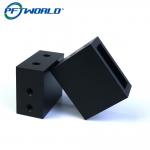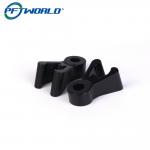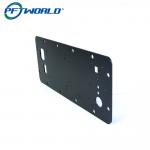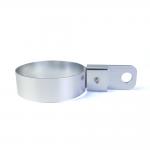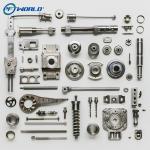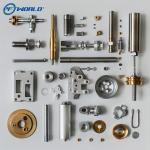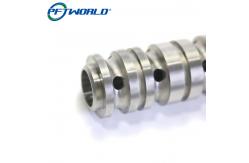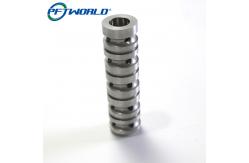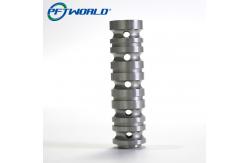CNC processing type: rust removal, sand blasting, carbonitriding,
bushing, turning, milling
Materials: aluminum, stainless steel, bronze, brass, copper,
precious metals, steel alloys, precious metals
Micro machining or not: micro machining
Method: CNC milling parts/CNC turning parts
Surface treatment: polishing, etching, vibration grinding, laser
engraving
Tolerance:+0.001 mm
Weight: 0.1~2.0 kg '
Surface treatment: powder coating, nickel plating, zinc plating,
chromium plating
Color: OEM
Size: OEM
Our service: OEM and ODM CNC processing according to customer
requirements
Equipment: CNC machining center, CNC lathe, CNC turning, milling
Product category: display accessories
Equipment: 3/4/5 axis machine tool, CNC lathe, CNC turning, CNC
milling
Certificate: ISO 9001:2015 and IATF 16949
Improvement measures for surface roughness in precision part
processing:
The technological factors that affect the surface roughness in
precision parts machining mainly include cutting parameters, tool
geometric parameters and so on. To improve, we need to start from
these aspects:
1. Cutting amount
The larger the feed rate is, the higher the residual area height
is, and the rougher the part surface is. Therefore, reducing the
feed rate can effectively reduce the surface roughness value.
The cutting speed also has a great influence on the surface
roughness. When cutting elastic-plastic materials at medium speed,
the surface roughness of the machined parts is relatively large
because it is easy to produce built-up chips and large plastic
deformation. Generally, low speed or high speed cutting of
elastoplastic materials can effectively avoid the generation of
chip buildup, which has a positive effect on reducing the surface
roughness value.
1. Tool geometric parameters
In the process of precision parts machining, the main deflection
angle, the secondary deflection angle and the tool tip arc radius
have a direct impact on the surface roughness of parts. When the
feed rate is given, the surface roughness value can be reduced by
reducing the primary and secondary deflection angles or increasing
the tool tip arc radius. In addition, properly increasing the rake
angle and the rake angle can reduce the cutting deformation and
friction between the front and rear tool surfaces, inhibit the
generation of built-up chips, and reduce the surface roughness
value.
FAQ:
1. How big is your facility?
Our factory covers an area of 3000-5000 square meters, with more
than 30 experienced employees, located in Shenzhen, China.
2. How soon can I get the samples?
Depending on your specific project, it usually takes 10 to 20 days.
3. How to enjoy OEM services?
Usually, according to your design drawings or original samples, we
will provide you with some technical solutions and quotations.
After you agree, we will do it for you.
4. When I send you drawings, what should I specify?
Please tell us at least the raw materials, finishes and quantities.
Jane, can you make a design for me?
We do not provide design services. You are responsible for
submitting 2D and 3D CAD drawings, and then we can provide
manufacturing design review after receiving your order
